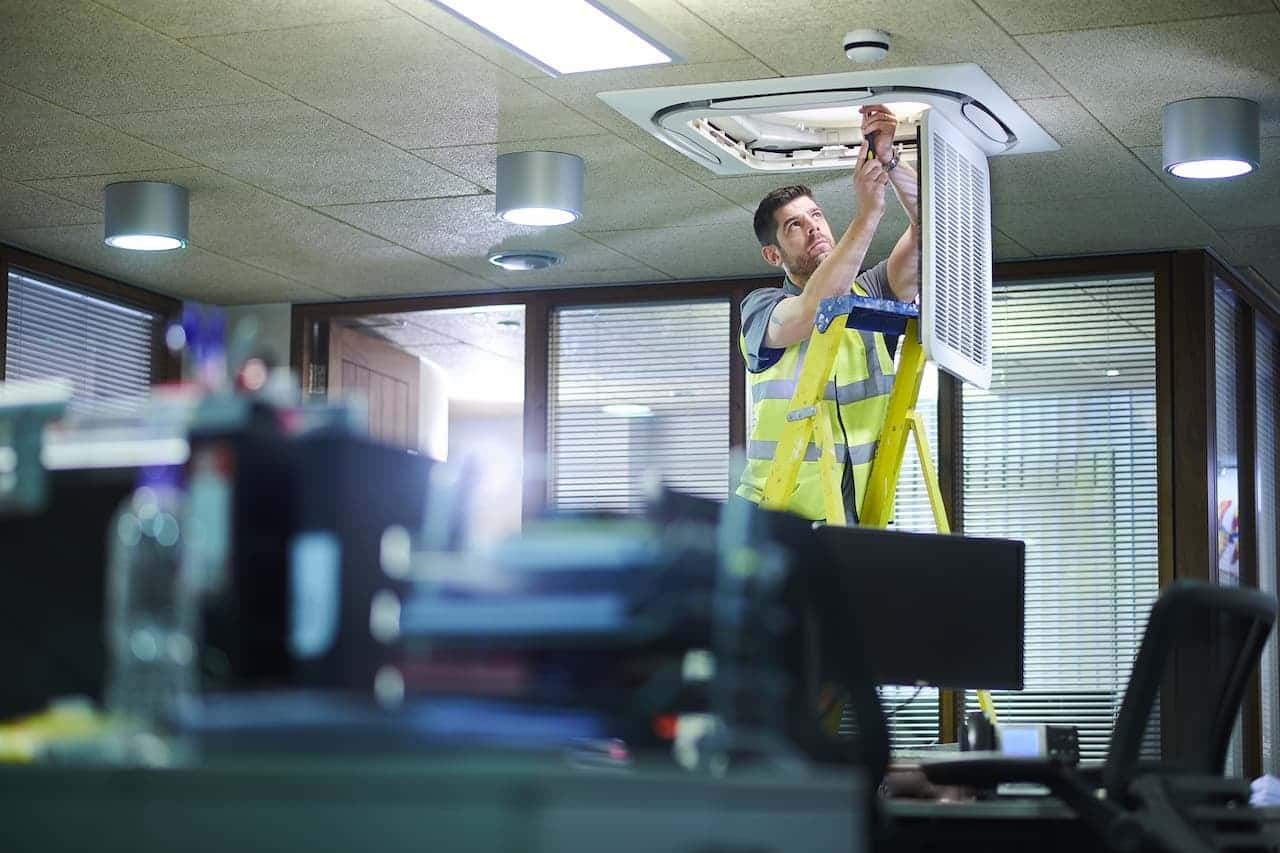Airtight building designs are known to reduce overheads, but also reduce the amount of fresh air into the building. Chemicals such as cleaning solutions and pesticides also have little chance to escape, leading to poor air conditions for your team.
Take a look at some of our examples of why you should have a good supply of fresh air into your office building.
Poor air quality illnesses
Poor air quality can be linked to many workplace-related illnesses sometimes referred to as sick building syndrome (SBS).
If there is poor air quality in the building, many of your team members may share similar symptoms of illness, such as headaches, dizziness, eye and nose irritation, fatigue or loss of concentration. It is thought that these symptoms often disappear when team members leave the building.
Causes of illnesses
Lack of fresh air
One of the primary causes of SBS is when there isn’t enough fresh air in places where people work. Air can become stagnant, contaminants can build up and unpleasant odours can develop.
All of these can lead to poor health.
Poorly maintained or operated ventilation
To be able to work effectively, ventilation systems need to be properly maintained to make sure that they can continue to perform their function.
If not properly maintained, dust, pollen or smoke can build up in occupied areas, leading to health problems for your team.
Disruption of air circulation
Good air quality is hugely dependent on how air can move through a space. If air cannot move freely around a space, it will build up in one space and become stagnant.
Walls, doors, dropped ceiling tiles or other obstacles can be known to restrict the flow of air, leading to stagnation which is bad for health.
Poorly regulated temperatures
If the temperature is too high or too low, this can also affect the air in the room. Your team may experience discomfort, irritation, loss of concentration, headaches or nose bleeds if the temperature is not suitable. Air conditioning can also make a room very dry, which can also affect your team.
Poor temperature regulation can also lead to high levels of humidity, which can create mould, some kinds of which can cause serious health problems.
Contamination
If you have chemicals in your workplace, such as cleaning solutions, paints, pesticides or glues, these can get into the air, and if left to linger for too long, can be very dangerous to your health.
Common indoor chemicals that could be dangerous to health include radon, ozone, ammonia, carbon dioxide, carbon monoxide sulphur oxides or asbestos.
Preventing or correcting poor air problems
Even if you don’t own the building that you or your team work from, you can still improve indoor air quality by doing the following:
Communication with building management
Keep in regular contact with the maintenance team in the building to make sure that any problems with air conditioning/ventilation get resolved as soon as possible.
If you don’t own the building, you should also agree with the owner who will be responsible for the operation of the ventilation system so that work can be done on a faulty ventilation system as soon as possible.
Revisit layout
Consider having a redesign of the layout of the office to ensure that air can move freely around, taking furniture, equipment, walls and other potential blockages into consideration.
Work with the building management before making any changes, and make sure that you put in a good case for why you need to make these changes to get the support of the property owner. You could also encourage the building management team to create a programme for future use in maintaining good quality air.
Products and procedures
Make sure that the products that you use are not harmful to your team, especially if you are already aware of a current issue with air quality. Change to different products if any of your team report symptoms of ill health caused by the products being used in your workplace.
If you are thinking of making any further purchases, make sure that these products will not impact the air quality in your office.
You should also make sure that your procedures which may impact air quality are carried out in the best interest of your employees’ health and well-being.
Pest control
As we have already mentioned, chemicals that are used in pest control can also be harmful to the health of your team.
If you do need to take any pest control measures, only do so if it’s necessary, and try to use non-chemical methods.
Office insurance with Premierline
At Premierline, we understand that no office environment is the same, and will each have their own unique business insurance needs. This is why our insurance advisors are trained to assess your business’ needs so that the insurance quote you receive has the right cover for your business.
Whether you run your business from your home and require home business insurance or have premises and require office insurance, speak to one of our knowledgeable business insurance advisors today for advice or if you know your insurance requirements compare quotes online.
















